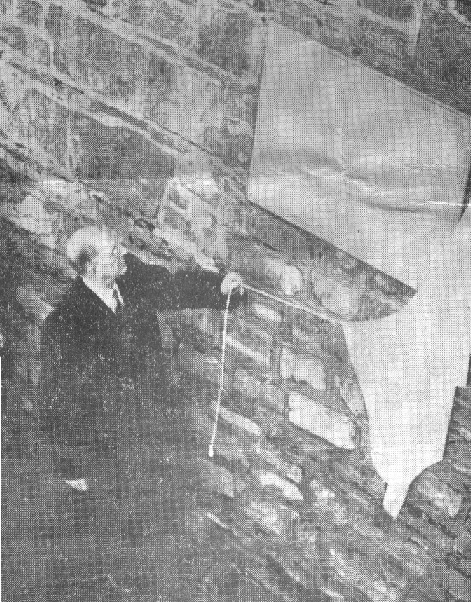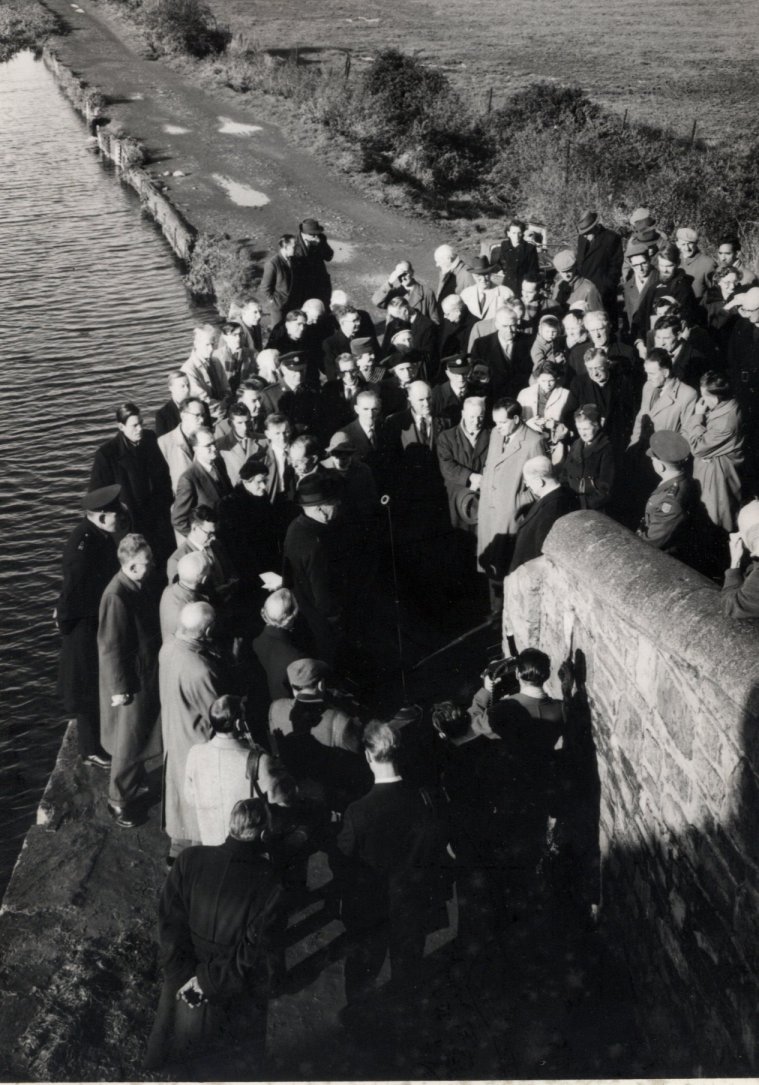Century of Endeavour
Science and Society in the 1950s
(c) Roy Johnston 1999
(comments to rjtechne@iol.ie)There was a wide gap between the Paris Ecole Polytechnique and associated Pic do Midi experience, and later the Dublin Institute of Advanced Studies (DIAS) experience, and the objective needs to the Ireland of the 1950s....
The Ecole Polytechnique research team did however give a glimpse of JD Bernal's vision of the productive system of the post-capitalist future, run on an egalitarian basis by people who have respect for each other's complementary skills. I touch on this in my account of the background to the Pic du Midi scientific work, in the academic stream, as reported in the 1953 Bagneres de Bigorre cosmic ray conference.
By and large the role of 'pure scientific research' like this is not only to satisfy human curiosity about the world, but also to stimulate the development of technology, by posing new problems, the solutions to which often turn out to be useful elsewhere.
Thus in the Pic du Midi we had a sort of industrial automation laboratory, using instrumentation, control and actuation systems, electrical, electronic, pneumatic and hydraulic, such as in subsequent decades became the norm in industrial production systems. Having absorbed a training in these technologies at the Pic du Midi, it would have been perfectly feasible for me to have evolved into a career of production engineering or systems engineering, had I been so inclined. The key to the social utility of pure science is the science-technology interface, apart from anything it might actually discover.
Subsequently in the School of Cosmic Physics of the DIAS, where I worked with Cormac O Ceallaigh on trying to make sense of meson and hyperon physics, we had a sort of cottage industry producing advanced instrumentation, in the form of various kinds of microscope add-ons, which we sold to other laboratories in our international collaboration.
O Ceallaigh during the 1950s was asked by the Government to advise on the offer by the US of a research reactor. He advised turning it down, until such time as the national scientific research budget might be large enough to accommodate it. If we had accepted the gift, its maintenance would have absorbed more than the then total R&D expenditure.
My father in the Seanad showed signs of having picked up 'science and economic development' ideas from the present writer, for example regarding the use of peat as a resource; he tried to promote a scientific approach to its use as an industrial raw material, rather than simply as a fuel.
There was an Atoms for Peace event in Geneva, organised by the United Nations, to which DIAS contributed a review paper. The objective of this was to increase public awareness of peaceful uses of atomic energy. This was somewhat of a dubious and inconsistent objective, as the key underlying factor which renders nuclear energy nominally 'economic' is the fact that it produces plutonium for weapons as a by-product, for which the military-industrial complex is prepared to pay.


During this period de Valera put up a plaque on one of the Royal Canal bridges, in memory of Hamilton's quaternions; he was reputed to have carved the basic relationships between 1, i, j and k into the stonework. The pictures above illustrate an event of which the significance is worthy of considerable critical analysis in the 'science and society' context.
The Sputnik went up; despite the earlier Hungarian episode, this seemed to suggest that science and technology in the USSR was thriving, and the government was attempting to pursue enlightened policies for converting military technology into social utility; the geostationary communications satellite envisioned by Arthur C Clarke in his 1940s 'Wireless World' paper (which I had read at the time) seemed to be several steps nearer to realisation. I remember we climbed up to the weather station on the roof of #5 Merrion Square, to view it at its predicted time, and we gave it a cheer.
[I probably have comments in left-wing papers on these topics, and I will add these in here if and when I find them.]
[1950s Overview] [Science and Society in 1960s]
Some navigational notes:
A highlighted number brings up a footnote or a reference. A highlighted word hotlinks to another document (chapter, appendix, table of contents, whatever). In general, if you click on the 'Back' button it will bring to to the point of departure in the document from which you came.Copyright Dr Roy Johnston 1999